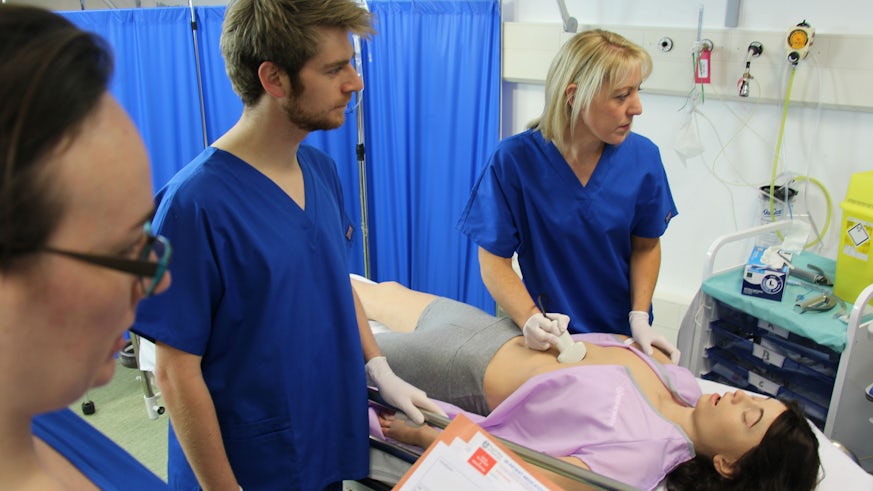Spinout launches ultrasound simulator
21 February 2018

Cardiff University spinout MedaPhor Group plc (AIM: MED), the intelligent ultrasound software and simulation company, has launched its new BodyWorks Eve simulator platform.
The ultra-realistic manikin-based simulator will be used to train medical professionals practising Point-of-Care Ultrasound (PoCUS) across emergency medicine and critical care.
First shown at the International Meeting on Simulation in Healthcare (IMSH) in Los Angeles last month and now launched for general sale, the BodyWorks Eve is believed to be the first hi-fidelity female manikin-based simulator for emergency PoCUS training.
BodyWorks Eve combines the normal and pathological hearts from MedaPhor’s HeartWorks simulator with the complete upper chest to pelvis real patient scans from MedaPhor’s ScanTrainer platform to teach the requirements of the growing PoCUS skills market, as outlined by the International Federation of Emergency Medicine (IFEM).
Complete with over 100 real patient ultrasound cases and over 10,000 patient scenario combinations, BodyWorks Eve replicates learning in a real-life emergency or critical care setting, allowing the tutor to control and change the severity and pathology of the patient in real-time.
MedaPhor has partnered with Lifecast Body Simulation (“Lifecast”), who have developed a range of accurate and lifelike ‘bodies’ for medical training, to increase the realism of the BodyWorks Eve simulator. Lifecast supplies the ultra-realistic manikin, which combines with MedaPhor’s intelligent ultrasound simulation technology.
Stuart Gall, Chief Executive Officer at MedaPhor, comments: “Point-of-Care ultrasound, whilst transforming the front line in emergency medicine and critical care, presents a huge challenge for the global medical industry in terms of upskilling the workforce. BodyWorks Eve is designed to meet these specific PoCUS training requirements and help universities, colleges and hospitals bridge the training gap to deliver positive outcomes for patients.”
